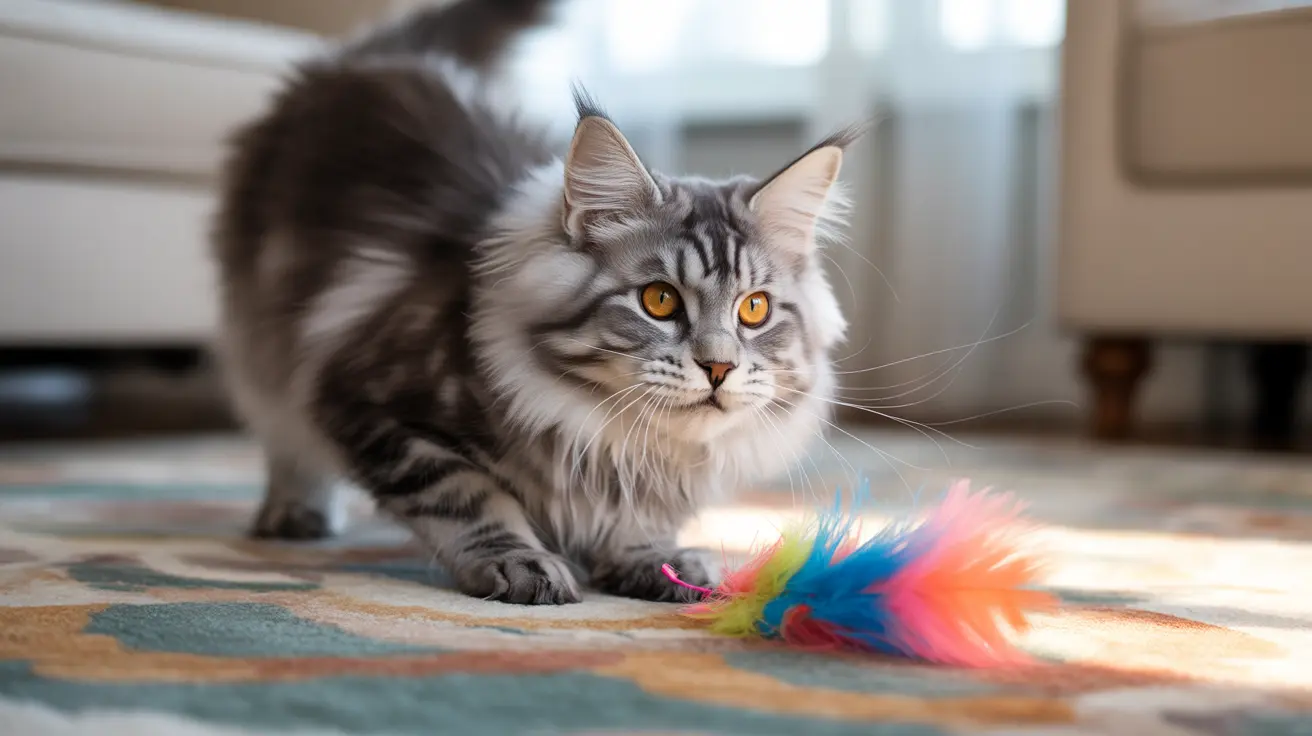A cat's tail is one of its most expressive features, and understanding why your cat is twitching its tail can provide valuable insights into their mood, intentions, and overall well-being. Whether you're a new cat owner or a seasoned feline enthusiast, decoding these subtle tail movements is crucial for maintaining a strong bond with your pet.
In this comprehensive guide, we'll explore the various reasons behind cat tail twitching, what these movements mean, and when you should be concerned about your cat's tail behavior. From playful excitement to warning signals, your cat's tail tells an important story about their emotional and physical state.
The Different Types of Tail Twitches and Their Meanings
Playful and Hunting Behavior
When your cat is in hunting mode or engaged in play, you'll often notice a distinctive tail twitch. This movement typically involves slow, calculated side-to-side motions, particularly when they're stalking a toy or watching birds through a window. This type of twitching indicates focus and excitement, serving as a preparation for pouncing or catching prey.
Emotional Signals
Different tail movements can signal various emotional states:
- A quick, short twitch at the tip: Mild interest or slight irritation
- Rapid thrashing: Strong agitation or anger
- Gentle quivering of an upright tail: Excitement or greeting
- Slow, low twitching: Anxiety or fear
Warning Signs in Tail Movement
Sometimes, tail twitching serves as a crucial warning signal. A rapidly twitching or thrashing tail often indicates that your cat is reaching their tolerance limit. This is particularly important to recognize during petting sessions, as ignoring these signs could result in scratching or biting.
When Petting Leads to Twitching
Pay special attention to your cat's tail during physical interaction. If their tail begins to twitch or thump while being petted, it's often a sign they're becoming overstimulated. This is your cue to give them space before the situation escalates.
Medical Concerns and Tail Twitching
While most tail twitching is behavioral, some patterns may indicate health issues:
- Constant, uncontrolled twitching
- Twitching accompanied by skin rippling
- Excessive grooming or biting of the tail area
- Changes in normal tail movement patterns
Feline Hyperesthesia Syndrome
This condition, though rare, can cause unusual tail twitching along with skin rippling and excessive grooming. If you notice these symptoms, especially combined with erratic behavior, consult your veterinarian for proper diagnosis and treatment.
Creating a Positive Environment
To minimize stress-related tail twitching:
- Provide plenty of environmental enrichment
- Maintain consistent daily routines
- Create quiet spaces for retreat
- Respect your cat's personal boundaries
- Ensure regular playtime and exercise
Frequently Asked Questions
Why does my cat twitch its tail when hunting or playing?
Cats twitch their tails during hunting or play as a sign of focused attention and excitement. This behavior is instinctual and helps them prepare for pouncing or catching prey, even if it's just a toy.
What does it mean if my cat's tail twitches or thrashes while I'm petting them?
Tail twitching during petting usually indicates overstimulation or irritation. It's a warning sign that your cat needs a break, and continuing to pet them might result in aggressive behavior.
Can persistent tail twitching indicate that my cat is in pain or has a medical condition?
Yes, unusual or persistent tail twitching, especially when accompanied by other symptoms like excessive grooming or behavioral changes, could indicate pain or medical issues. Consult your veterinarian if you notice concerning changes.
How can I tell if my cat's tail quivering is excitement or a sign of spraying behavior?
Excitement quivering usually occurs with an upright, happy tail position and positive body language. Spraying behavior involves a vertical tail position against surfaces and is often accompanied by backing up movements.
What should I do if my cat's tail twitches rapidly and aggressively during interactions?
When you notice aggressive tail twitching, immediately give your cat space and stop any direct interaction. This behavior indicates your cat is upset and needs time to calm down.
Conclusion
Understanding your cat's tail movements is essential for maintaining a harmonious relationship with your feline friend. By paying attention to these important signals, you can better respond to your cat's needs, avoid potential conflicts, and ensure their overall well-being. Remember that each cat is unique, so take time to learn your particular pet's tail language and communication style.






